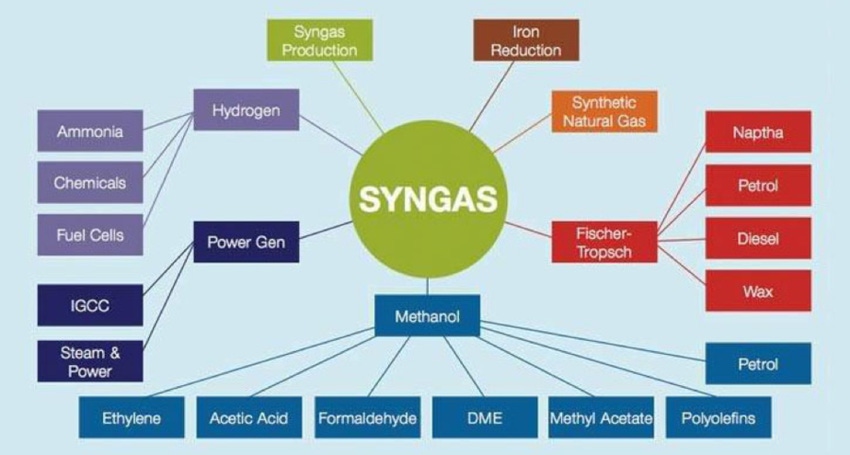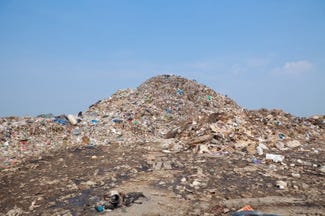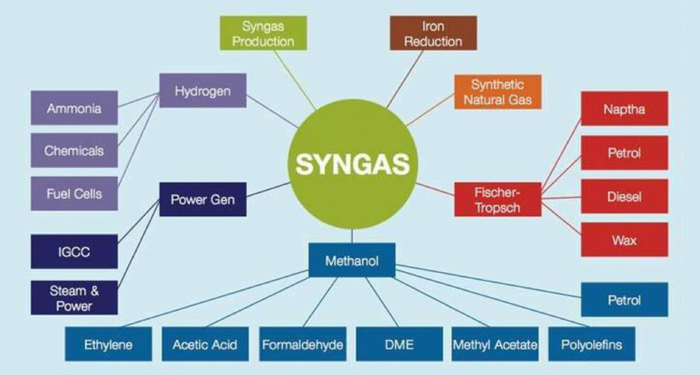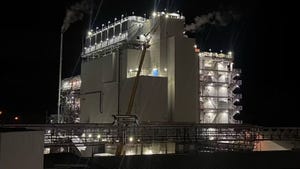Is plasma gasification the solution for plastics and all waste?
This proven technology offers an efficient, all-in-one solution to the broken and confusing municipal solid waste problem as plastic bans spread, landfills reach capacity and costs rise.
August 8, 2019

The time is now to focus on stretching goals to deal with sustainability. The decision that went into effect January 2018 by China’s government (“National Sword”) to stop accepting all United States recycling has exposed the vulnerability and ineffectiveness of our current processes for recycling and all forms of municipal solid waste (MSW). As it stands today, our municipalities are now all scrambling to figure out where to put these recycled materials. Some have simply shut down any recycling programs and are redirecting these curbside collections to landfills.
The problem is not limited to plastics, it needs to be defined as … “how to deal with all MSW?”
In order to forge a new and more significantly improved waste management approach, it is important to know where we have come from, identify present challenges, and create a pathway to a better future.
The past
The first municipal sanitary landfill to open was in 1937 in Fresno, CA. It was considered innovative at the time with new techniques of trenching, compacting and covering of waste with soil. Since then because of the considerable amount of open and cheap land we have accepted the practice of landfills in the U.S., and now there are more than 10,000 municipal landfills that have reached maximum capacity, leaving 3,091 active landfills according to the EPA. Long gone are the days where every town had its own dumpsite. According to the EPA, there are seven states that will be running out of landfill space in the next five years. With the closure of the Fresh Kills landfill, New York City is sending its trash to Ohio, Pennsylvania, West Virginia and elsewhere. Large city centers are especially challenged and driving waste further and further to reach landfills creating higher costs and increased carbon emissions.
cheap land we have accepted the practice of landfills in the U.S., and now there are more than 10,000 municipal landfills that have reached maximum capacity, leaving 3,091 active landfills according to the EPA. Long gone are the days where every town had its own dumpsite. According to the EPA, there are seven states that will be running out of landfill space in the next five years. With the closure of the Fresh Kills landfill, New York City is sending its trash to Ohio, Pennsylvania, West Virginia and elsewhere. Large city centers are especially challenged and driving waste further and further to reach landfills creating higher costs and increased carbon emissions.
The present
Using cheap land to dump and pile garbage is not an environmentally sound practice. Landfills can and have leaked causing contamination of surface and ground water, soil contamination and greenhouse gas emissions. Regulations of active landfills now require monitoring and investment of landfill gas collection and processing systems. Closed landfills continue to incur costs for up to 30 years due to settling of MSW that requires long-term care. Land plays a vital role in nature’s ecosystem, and accepting and incubating trash is not part of it.
The MSW supply chain in place today is fundamentally the same as was put in place in 1937 with regulations and technology improvements added. Trucks arrive curbside to pick up garbage and another arrives to collection for your recycled content assuming your municipality has that and another truck perhaps on another day will pick up your yard waste.
your recycled content assuming your municipality has that and another truck perhaps on another day will pick up your yard waste.
All of these trucks go to a transfer station hub where waste is consolidated and then transferred to long-distance trucks. Long haul transport takes the MSW to the next facility, either landfill, a recycling center or composting site. If a stream is considered contaminated it will again be transported this time to the landfill as the final resting place.
This is the current-day MSW infrastructure in the U.S.
Plastic problems
What is grabbing headlines today is that plastic is the problem. We read of plastic waste overtaking our recycling and ending up in our oceans—saving the planet from plastics has become a mantra. National Geographic wants you to sign up and commit to a plastic free world and have you make a choice: Planet or Plastic. Retailers are eliminating plastic grocery bags and straws. Some city governments have banned the sale of plastic water bottles fighting the use of single use plastics. We are all caught up in a war on plastics.
On the other hand, there are multiple efforts to increase plastic recycling through the following:
Inventing new chemistry of plastics to become recyclable;
Reuse packages and products made of plastics; and
Developing new biodegradable plastic formulas to provide the required performance.
These approaches are built on the assumption that consumers will properly sort, manage more streams than they do today or as many as four or five, and that consumer education is the answer.
Consider also glass, a material that’s 100% recyclable, yet 67% of glass doesn’t get recycled and is wasted.
Paper and paperboard are recyclable, yet prices are at a historical low for these materials and only 65% of paper and paperboard waste is recycled. While the 3R mantra of reuse, reduce and recycle are all well-intended they have been in place for some time now and have gotten us to where we are today. We need a more comprehensive solution to sustainability.
The future: A holistic solution
If we start with a holistic respect for the earth that goes beyond plastics to encompass all MSW it will lead to different solutions. The mantra of reduce, reuse, recycle has been tried and to expect more from consumers on sorting will only lead to incremental improvements. The U.S. needs a new playbook to handle waste management. We need to stretch our goals beyond just recycling plastics. According to the EPA, plastics comprise only 16% of MSW. This means that if all the multitude of incremental plastic recycling claims were successful and financially viable to deal with all plastic types, 84% of waste would still go to landfill. The waste management infrastructure is ripe for a disruption.
Science based solution: Dr. Bruce Welt, Professor, University of Florida, has evaluated multiple approaches and concluded plasma gasification is the most effective technology. Welt is pursuing the creation  of an industrial consortium and a UF Center For Advanced Recycling to transform the MSW infrastructure. Plasma gasification offers an opportunity to address the intractable problems facing our waste handling industry, it is a proven solution for all waste. This is a proven technology used in other domains and parts of the world since the early 2000s.
of an industrial consortium and a UF Center For Advanced Recycling to transform the MSW infrastructure. Plasma gasification offers an opportunity to address the intractable problems facing our waste handling industry, it is a proven solution for all waste. This is a proven technology used in other domains and parts of the world since the early 2000s.
In plasma gasification, feedstock (trash) is introduced into a vessel of extremely high heat (~2,000 deg F) capable of breaking all organic chemical bond and reducing all trash including plastic, paper, glass, yard waste, food, filth, etc. to basic elements. The heat also melts metals, which are recovered.

The primary products from plasma gasification are two: synthetic gas (“syngas"), and slag/vitrified glassy rock. Both of these products have high value, with syngas being the primary product. See attached chart of what syngas can be converted to. Depending on the regional economics, syngas can be used for electrical power, methanol or liquid fuels such as jet fuel, diesel, synthetic natural gas generation and others.
Plasma gasification is not to be confused with incineration, which is the burning of waste-emitting greenhouse gases and creating ash. It is also different from gasification, which has many installations today creating syngas to produce polymers for the plastics industry. Plasma gasification used for MSW would require no sorting of materials, eliminate the need for landfills, remove long-haul trucking from our roads and be financially viable. Plasma gasification has three revenue streams:
1. Collection of tipping fees for collecting MSW;
2. Sale of converted syngas to power, liquid fuels, synthetic natural gas; and
3. Slag has a minor value in construction materials, abrasives for the tool industry, etc.
There are cost avoidances coming from diversion of waste from landfills and reduction of long-haul trucks transporting waste. Large municipal size plasma gasification units (600 tons/day) require a high capital investment (~$120 million), but have good financials with project payback in less than five years. This creates a true circular economy!
Plastics are not the problem, municipal solid waste is! Disrupting and transforming our antiquated MSW infrastructure should be a top focus for our local municipalities, states and federal government.
For information about joining the industrial consortium via plasma gasification and UF Center For Advanced Recycling email directly, Dr. Bruce Welt at [email protected]
The Author
Mike Ferrari is the founder of Ferrari Innovation Solutions, llc. He is a brand packaging consultant coaching corporate leaders and guest lecture professor at the University of Florida Packaging Engineering College. Retired after 32 years of service from The Procter & Gamble Co., he is dedicated to educate, guide and inspire those in the packaging industry to grow. Follow him on twitter via @gamechanger78
About the Author(s)
You May Also Like




